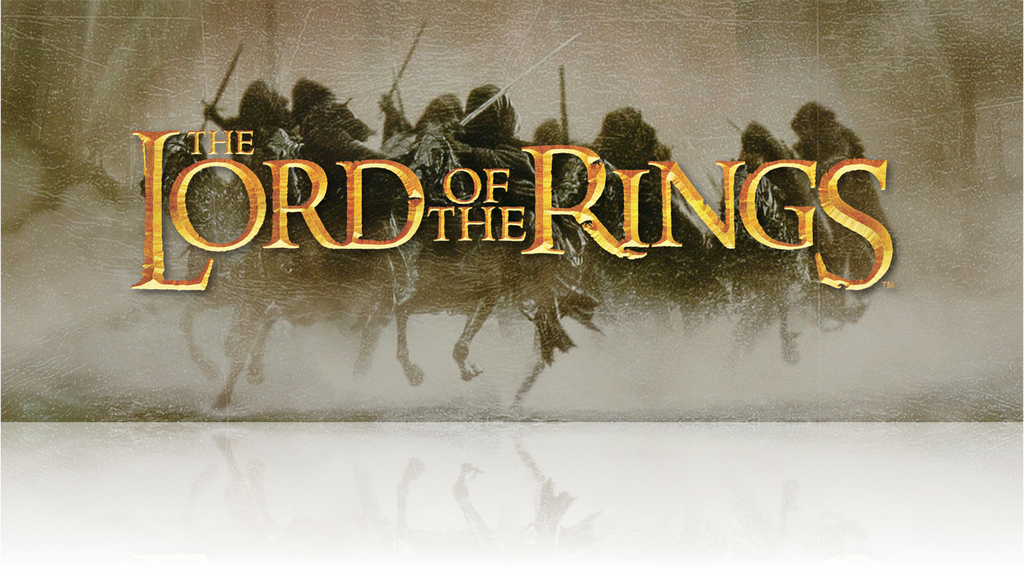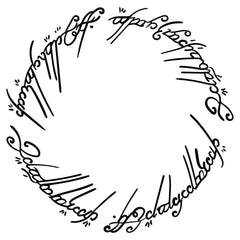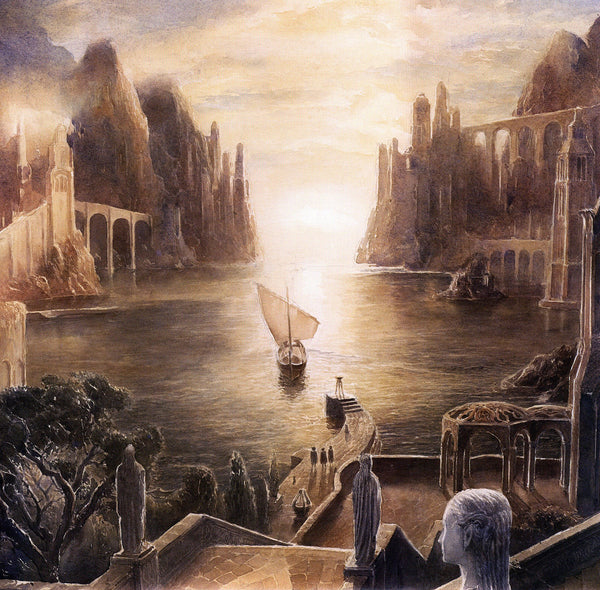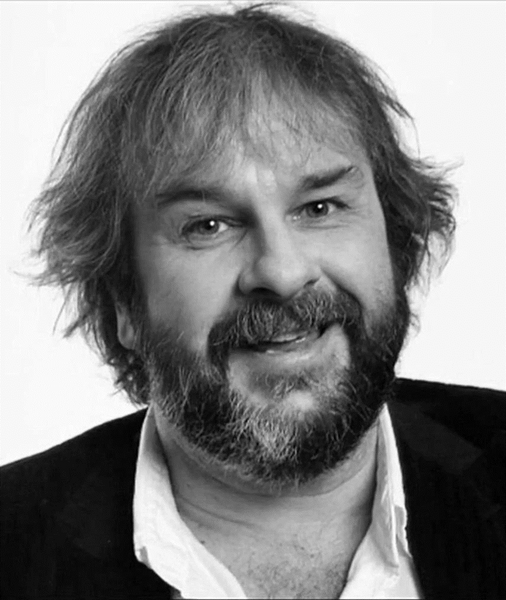
Movie franchises come and go, some rumble on forever, and still others are landmark moments in film. Over 20 years since the first instalment of Peter Jackson’s The Lord of the Rings trilogy hit theatres, it still feels like a monumental achievement, their stunning cultural impact undiminished by the wearisome proliferation of superhero blockbusters and the expansion of its own cinematic universe.
Like the original Star Wars trilogy, there is a clear sense that there was a time before Jackson’s epic fantasy movies, and a time after. Arguably, the impact of LOTR is more strongly felt because Tolkien’s source novels were already embedded in popular culture, tapping into an ancient form of adventurous storytelling and influencing many works including George Lucas’ galaxy far, far away.
I remember my reaction when the first movie dropped. I’d read parts of The Hobbit, the first half of The Fellowship of the Ring, and had a vague childhood memory of Ralph Bakshi’s animated The Lord of the Rings, but I felt like I had absorbed the full saga through cultural osmosis growing up. That is perhaps why Jackson’s films, particularly the first one, were so amazing; they presented the characters and the world of Middle-earth almost exactly how I’d always imagined them. I even welcomed characters I didn’t previously know as old friends. I stumbled out of Fellowship, thrilled and slightly dazed, trying to figure out how I’d handle a year-long wait to see how the next part played out.

John Ronald Reuel Tolkien was born in South Africa in 1892. His mother moved him permanently to England as a toddler after his father died, settling in a rural part of the West Midlands not far from Birmingham. From his depiction of the Shire, it is clear that his life-long love of nature, the countryside, and rustic folk stemmed from the villages and bucolic surroundings of his childhood. His Hobbits were much like the type of English people Tolkien felt such an affinity for: simple, hard-working, unimaginative, honest types who enjoyed their modest creature comforts but whose way of life was under grave threat from modernisation and sinister forces beyond their borders.
As he grew up into a fastidious scholar, Tolkien also developed a deep hatred of modern machinery and industry. This was no doubt exacerbated by his time serving in the British Army during the First World War, where he witnessed first hand the mechanised destruction of young lives and the landscape during the Battle of the Somme. The One Ring would come to represent the tainted power that modern technology gave to men, and the only way in Tolkien’s mind to banish its corrupting influence was its total eradication. In this sense, his fantasy novels were deeply ingrained with ecological concerns and anti-war sentiments of the real world.
Although he became one of Britain’s best-loved authors and the father of High Fantasy, Tolkien was first and foremost a scholar with a fascination for language. He contributed to the Oxford English Dictionary, studying the history and etymology of Germanic words beginning with “W”; worked on a Middle English dictionary; and produced the definitive version of Sir Gawain and the Green Knight.
Tolkien displayed his passion for world-building by writing a series of letters from Father Christmas to his children each year. These playful correspondences started out fairly standard but developed over time, with incidents and adventures involving polar bears, goblins, and elves, and turning Father Christmas into a notably Gandalf-like character.
Tolkien’s meticulous chronicling of Middle-earth and beyond began with The Hobbit, a tale first written for his kids. It was published in 1937, and he later used it as the jumping-off point for a far more ambitious trio of novels that expanded the scope and lore of his creation. While at Pembroke College in Oxford, Tolkien penned the first two volumes of The Lord of the Rings, drawing on his wide-ranging knowledge of ancient legends and Old English sagas like Beowulf to develop a secondary world of “extraordinary vastness.” The Fellowship of the Ring and The Two Towers were both released in 1954, followed by a third volume, The Return of the King, the year after.
Tolkien saw the creation of Middle-earth as a way of replacing the old English mythology that he felt the country had lost around 1066, and carried on building it until he passed away in 1973. To him, The Hobbit was a mere trifle in the grand scheme of things, especially when viewed in the staggering timeline of his opus, The Silmarillion, which was published after his death. Not only did he imagine this enormous literary world, he also invented an entire family of Elvish languages complete with their own history and ornate script. Nowadays you can even take online classes to learn the lingo Tolkien painstakingly created throughout his life.

Although Tolkien’s books were well-received on their initial publication, it wasn’t until Tolkien became an unlikely counterculture figure in the 1960s that they really blew up in popularity. His fantasy stories, tinged with anti-war and anti-capitalist sentiments, were embraced by young people seeking escape from an uncertain future in the age of the Vietnam War and an escalation in Cold War tensions. The themes of Tolkien’s novels chimed with hippies and protesters, some of whom enhanced their experience of Middle-earth with mind-altering drugs.
Despite the fame and wealth that the ongoing popularity of his novels brought him, Tolkien wasn’t always best pleased with how people chose to interpret them. Although parallels to Tolkien’s Catholicism are fairly easy to make, he always insisted that there were no hidden meanings in the story.
That didn’t stop people finding those hidden meanings anyway, such as Led Zeppelin, who made several references to Tolkien’s world in their songs. Robert Plant said of “Misty Mountain Hop,” which alluded to the Misty Mountains of The Hobbit:
It’s about a bunch of hippies getting busted, about the problems you can come across when you have a simple walk in the park on a nice sunny afternoon. In England it’s understandable, because wherever you go to enjoy yourself, ‘Big Brother’ is not far behind.
Tolkien’s novels also inspired several other writers and filmmakers who began their careers in the ‘70s and ‘80s, including Stephen King, Clive Barker, and George Lucas. It is certainly no stretch to see Luke Skywalker as Frodo and Obi-Wan Kenobi as a Gandalf-like mentor.
The ‘70s also saw the first attempt at bringing The Lord of the Rings to the screen, courtesy of animator and filmmaker Ralph Bakshi. Bakshi had dreamed of making a version of the saga as far back as the ‘50s when he first encountered the books. After making his name with controversial adult cartoons like Fritz the Cat (1972) and Coonskin (1975), he got his chance.
United Artists picked up the rights to Tolkien’s novels in 1969 and considered several directors to adapt them including David Lean, Stanley Kubrick, and Michaelangelo Antonioni. But the project never got off the ground for a variety of reasons — Kubrick declined because he felt that the novels were unfilmable.
Bakshi approached the studio about making the film in 1975. Saul Zaentz, who had successfully wrangled another seemingly unfilmable counterculture novel to the screen, Ken Kesey’s One Flew Over the Cuckoo’s Nest, agreed to co-produce. Bakshi rejected a screenplay from John Boorman because he felt that the idiosyncratic writer and director didn’t understand the source material and met with Priscilla Tolkien, promising that he would remain faithful to her late father’s work.
Three films were initially considered but Bakshi eventually agreed to two epic-length episodes. This meant that he was forced to greatly condense the story to fit into a filmable screenplay.

To animate the film, Bakshi settled on a rarely-used technique called Rotoscoping. The benefit of this was that it would give battle sequences a more realistic look and greatly cut down on production costs. Released in November 1978, The Lord of the Rings was received well by critics and made money at the box office, but diehard Tolkien fans were incensed by the animation style and lack of a conclusion. Despite its financial success, Part Two was cancelled by the studio.
The film was sandwiched by two Rankin/Bass animated TV movies: The Hobbit in 1977 and The Return of the King in 1980. Despite featuring some fine vocal talent including John Huston as Gandalf and providing an ending to the story Bakshi started, the latter wasn’t very well liked.
Ultimately, it was a common perception that creating a world as rich and vast as Tolkien’s would be far too expensive and technically challenging to successfully bring to the big screen, at least in terms of a live-action film. That attitude began to change in the ‘90s as CGI blossomed and became a major player, capable of doing much of the heavy-lifting when it came to animation and world-building.
Also in the early ‘90s when CG was making liquid metal killing machines and realistic dinosaurs possible, an artist called Alan Lee was asked to create a series of illustrations for a new edition of The Lord of the Rings to celebrate the centenary of Tolkien’s birth. His imagery would have a major impact on how people imagined Middle-earth might look. Around the same time, a filmmaker of a certain Hobbit-like appearance entered the story from the other side of the world.

The Grey Havens by Alan Lee
Around 12,000 miles away from the study where J.R.R. Tolkien first envisioned the story of Frodo Baggins, Samwise Gamgee, and the other cohorts of The Fellowship of the Ring, a teenager called Peter Jackson from New Zealand first encountered Ralph Bakshi’s half-successful adaptation. It compelled Jackson to read the books to find out what happened next, and he figured that one day someone would make a fine film out of it. He probably had no idea that the person would be him.
Jackson’s path to helming one of the biggest film franchises ever made was an unusual one. He started out in the ‘80s and early ‘90s with a trio of low-budget splatter comedies: Bad Taste, Meet the Feebles, and Braindead (aka Dead Alive). The films were crude and definitely lived up to the title of the first, but displayed inventiveness, imagination, and a clear talent for getting the most out of special effects.
Jackson’s directing career took a sharp left-turn towards respectability when he made Heavenly Creatures (1994), a dark period drama covering the events of the 1954 Parker-Hulme murder case, when two teenage girls conspired to murder one of their mothers. Rather than take the traditional route, however, Jackson laced the tale with fantasy sequences that emphasised the girls’ increasingly tenuous connection with reality. Jackson also unearthed two outstanding young talents to play the killers: Melanie Lynskey and Kate Winslet.

Around the same time, Jackson and his wife and co-writer Fran Walsh were in talks with Hollywood about their next project, The Frighteners (1996). Robert Zemeckis was originally interested in directing, but eventually decided it would work better with Jackson at the helm. Zemeckis ended up producing with Universal Pictures stumping up the $26 million budget.
Starring Michael J. Fox at the tail end of his career peak, the movie wasn’t a box office success but once again demonstrated Jackson’s flair for the fantastical and ghoulish. It also set the template for what would come next on a far larger scale: Hollywood funding a trio of Jackson-directed Tolkien adaptations shot on his home soil, an unconventional combo of Tinseltown clout melded with the Kiwi’s distinctive vision, talent, and work ethic.
In 1995, Jackson and Walsh had decided to move forward on developing a new screen version of Tolkien’s most famous works. They approached Harvey Weinstein and Miramax, who were instrumental in securing the rights to The Lord of the Rings. The Hobbit, the basis of Jackson’s later prequel trilogy, proved far more difficult to obtain due to legal issues.
It was still evident that realising Tolkien’s grand vision on screen would require an immense amount of funding and Weinstein tried persuading Jackson to condense LOTR into a single movie. Jackson had a bigger picture in mind and insisted on three films to do the story justice, holding out despite threats that Weinstein would replace him with John Madden or Quentin Tarantino.
Such an ambitious project was still too rich for Weinstein’s blood, although Jackson was encouraged enough to start preliminary work. Around the same time, Weta Digital, Jackson’s special effects company that had provided the CG sequences in Heavenly Creatures, were feverishly working on software with the capacity to create Middle-earth.
Eventually, Weinstein wangled a deal with New Line Cinema which gave him an expensive payoff and an Executive Producer credit. Now Jackson had backers with deep enough pockets to make LOTR happen, and the project was greenlit with a budget of $60 million per film. Those funds were topped up to help complete the trilogy to its full potential after audiences at Cannes Film Festival were wowed by an expensive 26-minute showreel and Middle-earth themed party in 2001.
Pre-production began with storyboarding and screenwriting as far back as 1997. Jackson’s twin goals were to streamline Tolkien’s narrative to make it easily comprehensible for audiences and take a realistic approach to world-building, treating it more as a historical epic than a fantasy movie. The three films were scheduled to shoot back-to-back and cameras eventually rolled in October 1999, continuing until the last pick-up shots were complete in 2004.
The scale of the project was like nothing else attempted before. Jackson oversaw the whole gig staged entirely in New Zealand, with seven different units shooting around six million feet of film across 150 locations. The crew totalled around 2,400 professionals and up to 26,000 extras. 64 incredibly detailed miniature sets were constructed and groundbreaking digital technology filled in the gaps, while the natural splendour of New Zealand’s national parks provided an awe-inspiring backdrop. Unlike the sterile green screen worlds of Star Wars: Episode I (1999), the immense landscapes of the country were a major selling point for the films, grounding this tale of wizards, elves, and talking trees with a sense of realism.
Rounding out the huge roster of characters was a challenge, and Jackson’s casting people were on point with all their decisions. It is almost impossible to imagine anyone else other than Elijah Wood as Frodo, Ian Holm as Bilbo, Viggo Mortensen as Aragorn, Ian McKellen as Gandalf, and so on. Christopher Lee lobbied for the latter role but Jackson felt he was better suited to Saruman, presumably due to his horror credentials. Another key contributor was Andy Serkis, whose incredible motion-captured performance brought the entirely CG Gollum to life.

Yet several other interesting names were in talks at one point or another. Both Miramax and New Line favoured a big-name actor to play Gandalf, and Max von Sydow, Morgan Freeman, and Sean Connery were all considered. Nicole Kidman was named as a back-up option for Galadriel, although the part went to fellow Aussie Cate Blanchett. Anthony Hopkins was in the frame for Bilbo; Daniel Day-Lewis for Aragorn; Billy Connolly for Gimli; and Liam Neeson or Nicolas Cage for Boromir.
For such a huge production, filming of the trilogy passed relatively smoothly. Watching the “Making of” documentary is interesting; with New Zealand as its base, there is something charmingly down-to-earth about how the cast and crew muck in to get the job done. In the middle of it all is Jackson, looking more like a substitute Geography teacher with his unkempt hair and shabby clothes than a man in charge of one of the biggest franchises in cinema history.
To add the final touch, Canadian composer Howard Shore (The Silence of the Lambs, Philadelphia, Seven) was drafted in to orchestrate a suitably epic score comprising of dozens of leitmotifs to represent various characters, cultures, and settings, the largest ever created for a film or series of films.

The Fellowship of the Ring premiered at the Odeon Leicester Square in London in December 2001 and was rapturously received by audiences and critics alike. It was an extraordinary achievement, one that took its source material incredibly seriously without ever seeming po-faced or pretentious.
Fellowship is a rousing adventure that offers thrills and incredible spectacle without sacrificing character, and it is their relationships that made it so special. We don’t question for one minute why Gandalf likes hanging out with Hobbits, or Samwise Gamgee’s unwavering loyalty to Frodo. We don’t get much about the romance between Aragorn and Arwen, but we instantly know it is a lifelong love. Perhaps the most moving character arc is that of Boromir (Sean Bean), a good and noble warrior who is nevertheless swayed by the Ring’s malign power, but recovers his pride by making a heroic sacrifice to save Frodo at the end. Over two decades later, the special effects may have dated a little, but that hardly matters – the focus is on the story and the characters, and it will remain timeless because of that.

The Two Towers followed in 2002, receiving much the same hype, acclaim, and box office success as its predecessor. I was a little underwhelmed on first viewing. As the middle chapter, it lacks some of the narrative thrust of the first film, with the Fellowship disbanded and a lot of manoeuvring to set the table for the last part. Even so, it gave Gollum his time to shine and he remains perhaps the most fully realised CGI character ever created.
On February 29th 2004, Jackson’s triumph was complete. At the 76th Academy Awards, The Return of the King took home eleven prizes including Best Picture and Best Director, tying with Ben-Hur and Titanic as the most awarded films in Oscar history. It isn’t perfect; much has been made of how it turns into a sentimental victory lap with the multiple endings.

But the accolades were fully merited as reward for the entire trilogy, the biggest and most ambitious project in cinema history. In total, the three films made over $2.9 billion worldwide, won 17 Oscars, and racked up 475 awards overall. More importantly, Jackson’s The Lord of the Rings Trilogy brought adventure and joy to millions, making it one of the most cherished franchises ever committed to film. Maybe even Tolkien would appreciate that.
So there you have it, our retrospective on The Lord of the Rings Trilogy. How did you feel when you first watched the films? Which part is your favourite? Let us know!




